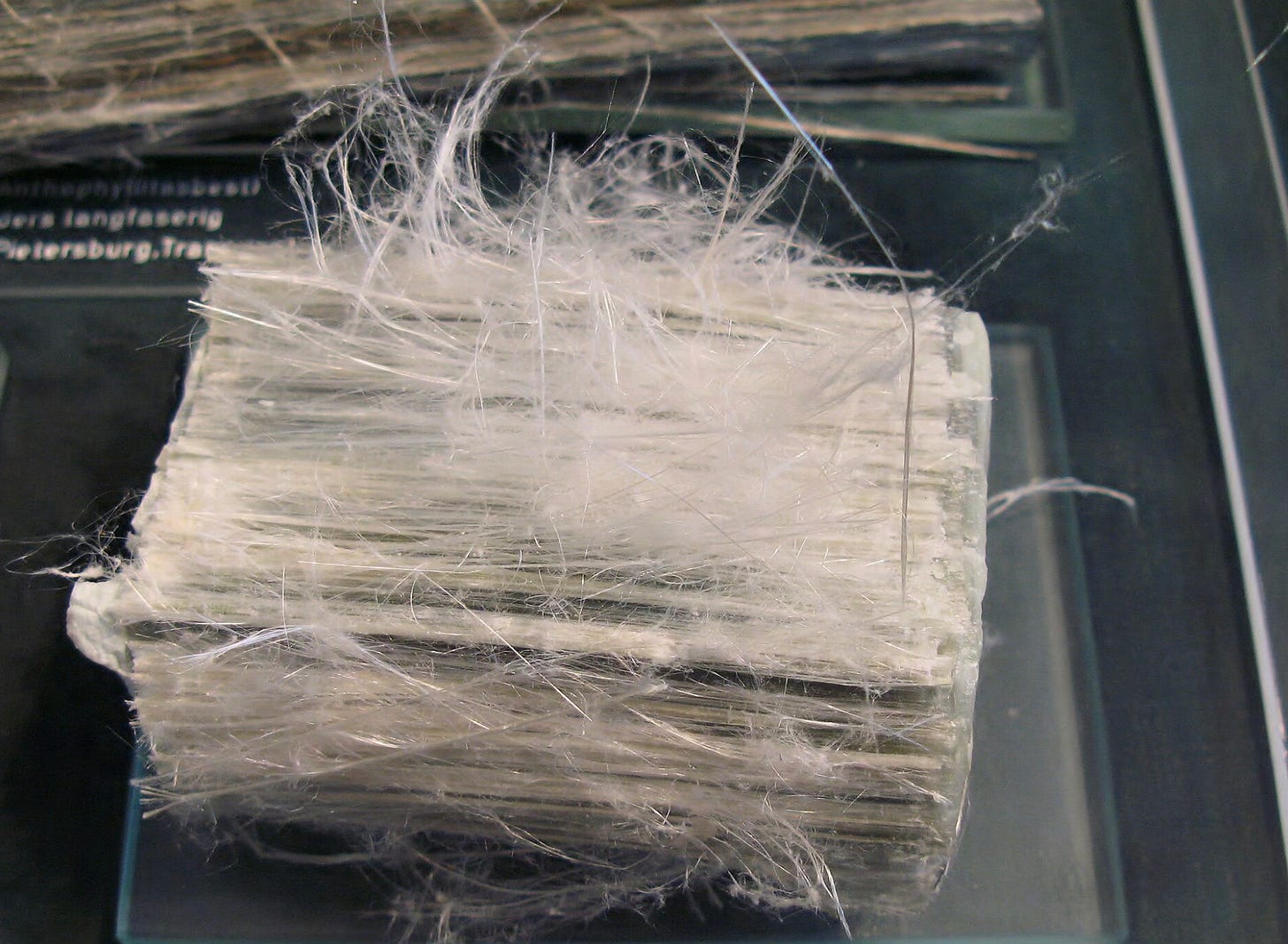Where do the green substances or colors in the blood come from?
And what does this have to do with fiber formation? An involuntary science thriller...

Due to the lack of a mass spectrometer or other methods for detecting substances in the blood, we have to approach the matter differently. With some astonishing findings. At the same time, you end up in a science thriller and the realization that our AIs have some serious memory gaps.
But let's start from the beginning to get a logical and understandable sequence into it:
If we were conspiracy theorists:
Then the following scenario would be quite conceivable:
Hypothetically, I imagine a power greater than all government powers. But if I continue to keep them separate and that they don't want to be involved with me, I give them both an advantage over the other.
I break it down to a simple mode - Russia or the USSR at the time did tremendous basic research into Tesla technology - while in the West it was frowned upon and every recognized scientist decadently turned up their nose at it. Conversely, we in the West were much more active in the field of chemistry. But with one problem - half-finished findings were very quickly marketed profitably, with corresponding mistakes. See genetic engineering.
But at the same time, the best researchers from both sides are brought together in the background to combine their research far away from the public eye and achieve something almost unbelievable for us.
If you look through old literature - and as I'm not a scientist, I'm open-minded and try to understand everything - I've come across some explanations from a wide variety of fields.

Where does the green color in crystals come from? Let's start with crystalline nature - for example olivine
Olivine is a mineral group that consists of a mixed series between two end members:
Forsterite (Mg₂SiO₄) - magnesium-rich, colorless to light green
Fayalite (Fe₂SiO₄) - rich in iron, rather yellowish to brown-green
The green color of olivine is due to the proportion of iron (Fe²⁺), which partially replaces the magnesium. But:
It is not pure fayalite that makes olivine green, but a solid solution with a certain proportion of iron (usually 10-30 % Fe).
Fe²⁺ ions absorb light in the visible range and thus cause the characteristic green color.
Color nuances:
More magnesium (forsterite-rich): Light green, clearer
More iron (fayalite-rich): Darker, olive green to brown-green
Yes, it is the iron (Fe²⁺) in the olivine that is responsible for the green color - but not fayalite as a pure end member, but the iron content in the solid solution with forsterite.
This gives us an explanation of the substances that make up these green areas for our blood.
It becomes much more exciting when we turn to the serpentine minerals, which are rich in forsterite! This picture alone makes us sit up and take a closer look at the fibers in our blood and environment.
Chrysotile asbestos from serpentinized dolomite:

Compare the image with the structures in this post:
Plastic cobwebs everywhere
You're looking forward to spring, the snow is thawing and the ground is slowly beginning to thaw. And then you take a closer look and discover cobweb-like structures scattered all over the land. Sometimes more, sometimes less.
It is a layered silicate and the Russian mathematician O.M. Kalinin, who was in charge of an entire group of physicists, simply wanted to find out how this serpentine behaves in the earth. He recreated the pressure of the earth and exposed the crystal to a pressure of 1.5 GPA and bombarded it with protons. This process resulted in HELIUM!
This is the same as cold fusion, which supposedly does not exist. We remember wrinkling our noses. That was in 1989 and the laboratory was closed. As was to be expected.
Let me remind you again
The magnesium silicate forsterite Mg2[SiO4] acts like a catalyst, releasing helium at just 600 degrees Celsius through pressure and proton bombardment. In addition, silicon is converted into magnesium and vice versa.
Serpentine itself forms tubular structures and we really do have enough of these in our blood. This bilayer silicate with SiO4 forms a Tetrahedral layer and with the Mg an Octahedron layer. As the lattice spacing in the octahedron layer is not identical to the tetrahedron layer, the whole thing bends and we get a roll - a tube.
The silicon oxide is on the inside - the concave part of the tube and the magnesium oxide is on the outside - the convex part of the tube.
The transformation of minerals through pressure and temperature is called metamorphic succession. When I look at the metamorphic properties of the materials in the blood, this process could have an equivalent here. Since we can't even identify most materials because nobody really knows them, who's to say that we haven't copied from nature to achieve this metamorphosis.
The interesting thing here is that magnetite can be formed from an iron deposit through metamorphosis.
Magnetite in the body is primarily found in the hippocampus. This is exactly where massive changes in memory are currently taking place.
As described in this article:
The Great Reset - The Deliberate Oblivion
This is going to be a longer text again... So let's get out to understand the context:
In addition, too much magnetite in the body leads to oxidative stress and neurodegeneration, such as Alzheimer's disease.
Further disorders are caused by electromagnetic fields.
Brief summary:
Serpentine is a rock that is formed when olivine (like forsterite) comes into contact with water.
We have materials in the body and the environment that no normal laboratory in the world knows. We know the metamorphic properties of crystals that produce tubular structures and in the process engage in cold fusion - i.e. energy production. And last but not least, iron from red blood cells that can be converted into magnetite and used in the brain for reprogramming and neuronal reprogramming.
And you can find all this if you want to know what the green color in the new structures in the blood is.
Sources to read up on
After extensive research, I could no longer find a Russian mathematician or scientist with the initials O.M. Kalinin on the Internet who is prominently represented in the scientific literature or in publicly accessible databases. It was only after my own research that I found him:
Dr. Oleg M. Kalinin is a graduate of the Faculty of Mathematics and Mechanics of St. Petersburg State University (SPbU), where he completed his studies. Founded in 1951, the Faculty's Department of Applied Mathematics has a long tradition and has produced many renowned mathematicians, including Kalinin.
Now - 5 minutes after I found this link - the page was no longer there. Even his participation in this institute has disappeared. Says it all.
The only info is here: https://math.spbu.ru/eng/apmath/116-incoming.html
There is currently no publicly available information indicating that Dr. rer. nat. habit Olig M. Kalinin is actively associated with the SPbU. His current professional status and activities are not documented in the available sources.
However, there is a well-known Russian scientist named Sergei V. Kalinin who works in the field of nanotechnology and materials science. He has made significant contributions to nanotechnology and materials science and has been honored with several prestigious awards, including the Blavatnik Award for Young Scientists and the Presidential Early Career Award for Scientists and Engineers (PECASE) in 2009.
Sergei V. Kalinin is a renowned Russian scientist who is internationally known for his work in the field of nanotechnology, particularly in materials science. He is known for his research in the fields of nanostructuring, scanning specimen microscopy and energy conversion on the nanoscale.
He follows on seamlessly from the research of O.M. Kalinin. I could only find a reference to this man in old literature dealing with free energy, for example in the field of global scaling.
Even a relationship between the two - not found. And yet the young Kalinin's research is based on the supposedly non-existent Kalinin.
We live in a crazy world.
Sergei V. Kalinin has published a number of important papers on nanotechnology and related topics. Here is a list of some of his best-known publications and contributions:
1. nanostructuring and ferroelectric materials:
Title: “Ferroelectric and multiferroic nanomaterials”
Journal: Nature Materials (2012)
Summary: This work investigates the properties and applications of ferroelectric and multiferroic materials at the nanoscale. Kalinin discusses the challenges and opportunities of manipulating these materials for memory technologies and energetic applications.
2. SPM techniques for nanomaterials:
Title: “Scanning probe microscopy techniques for nanomaterials characterization”
Journal: Journal of Vacuum Science & Technology B (2009)
Summary: In this paper, Kalinin gives an overview of the different scanning probe microscopy (SPM) techniques and their application for nanomaterials characterization. This includes the investigation of surface structures and electrical and mechanical properties of nanomaterials.
3. nanophotonics and nanoelectronics:
Title: “Nanophotonics and nanoplasmonics in energy conversion”
Journal: Journal of Applied Physics (2010)
Summary: Kalinin and his colleagues deal here with the use of nanophotonics and plasmons to improve the efficiency of energy conversion systems, especially in the field of solar cells and light energy conversion.
4. electrical properties of ferroelectrics:
Title: “Electric field-induced strain and polarization switching in ferroelectric materials”
Journal: Applied Physics Letters (2007)
Summary: Kalinin describes the interactions between electric field and ferroelectric materials. In particular, the strain and polarization of ferroelectrics when electric fields are applied is investigated, which is important for future storage technologies and energy applications.
5. nano-energy conversion and storage technologies:
Title: “Nanostructures for energy storage and conversion”
Journal: Nature Materials (2010)
Summary: This paper focuses on the development of nanostructures for energy storage and conversion. It highlights how nanomaterials can increase the efficiency of batteries, supercapacitors and other energy storage devices.
6. magnetism and nanomaterials:
Title: “Magnetic nanostructures for spintronic devices”
Journal: IEEE Transactions on Magnetics (2009)
Abstract: In this paper, Kalinin discusses the application of magnetic nanostructures in spintronics, a technology that utilizes the spin properties of electrons to improve the performance of memory and computing devices.
7. nanostructured materials for medicine:
Title: “Nanomaterials for biomedical applications”
Journal: Science (2011)
Summary: Kalinin and his team are investigating nanomaterials and their applications in the field of medicine, particularly in relation to drug delivery systems, diagnostic methods and tissue regeneration.
8. multiscale modeling of nanomaterials:
Title: “Multiscale simulations of nanomaterials: From molecular dynamics to continuum modeling”
Journal: Physical Review B (2012)
Abstract: This paper discusses multiscale modeling of nanomaterials that combines both molecular dynamicsand continuum mechanical models to understand the behavior of nanostructures at different scales.
9. applications of nanomaterials in energy storage:
Title: “Nanomaterials for high-efficiency energy storage”
Journal: Energy & Environmental Science (2011)
Summary: In this paper, Kalinin and his team discuss how nanomaterials can significantly increase the efficiency of energy storage devices, such as lithium-ion batteries and supercapacitors.
10. interactions between nanomaterials and light:
Title: “Optical properties and light-matter interactions in nanomaterials”
Journal: Nature Photonics (2013)
Summary: Kalinin analyzes the optical properties of nanomaterials and the interactions between light and matter, which is crucial for applications in optoelectronics, photonics and energy conversion.
SAM’s Substack - darkfield-enigma.com is a reader-supported publication. To receive new posts and support my work, consider becoming a free or paid subscriber.
For your help and support here on Substack you will also get access to my Future Targets, Extra Targets and the first blueprint for the LaserCube on my website.
I have set up a Telegram channel - where I post new images from darkfield microscopy. If you would like to browse through new pictures in between, you are welcome to register.










Hi Sam, I’ll read in detail later.
However, do you happen to know much about the alien properties of Mercury, the metal?
Of course you will know about when it is deep frozen to be utilisés as a super-conductor, it morphs into an alien substance.
But what about Red Mercury?
I’ve seen the video of it’s unearthly properties, such as it’s reflection not being visible when held in front of a mirror?
And this would seem to hint at it occupying a somewhat liminal space in our periodic table and physical universe?
Hello SAM!
I think that you’ll find plenty of interesting informations on Oleg M. Kalinin here:
https://yandex.com/search/?text=Dr.+Oleg+M.+Kalinin&lr=21382
There are many scientists in the Kalinin family…
Nikolai Kalinin
‘’Optimizing the generation of polarization squeezed light in nonlinear optical fibers driven by femtosecond pulses.’’ A. Andrianov, N. Kalinin, +4 authors : https://www.semanticscholar.org/paper/Optimizing-the-generation-of-polarization-squeezed-Andrianov-Kalinin/f5b4d559174d5dd26ccc45bb506243da35b6e1e7
BTW, Asbestos mineral was named from this Québec area (now known as Val-des-Sources) where it was first discovered. Thetford Mines, close to former Asbestos city, is also rich in steatite, olivine, magnesite, and asbestos; while prospecting this closed mine site, the native olivine that I had found there was an olive green spiralling tube formed of tiny but regular rhomboids resembling a perfect spiral green shit pile. Very nice! :) Olivine and peridotite are also associated with native gold and I could also observed the same crystal tubular structures in three iron meteorites that I have found in another area.
Kind regards.